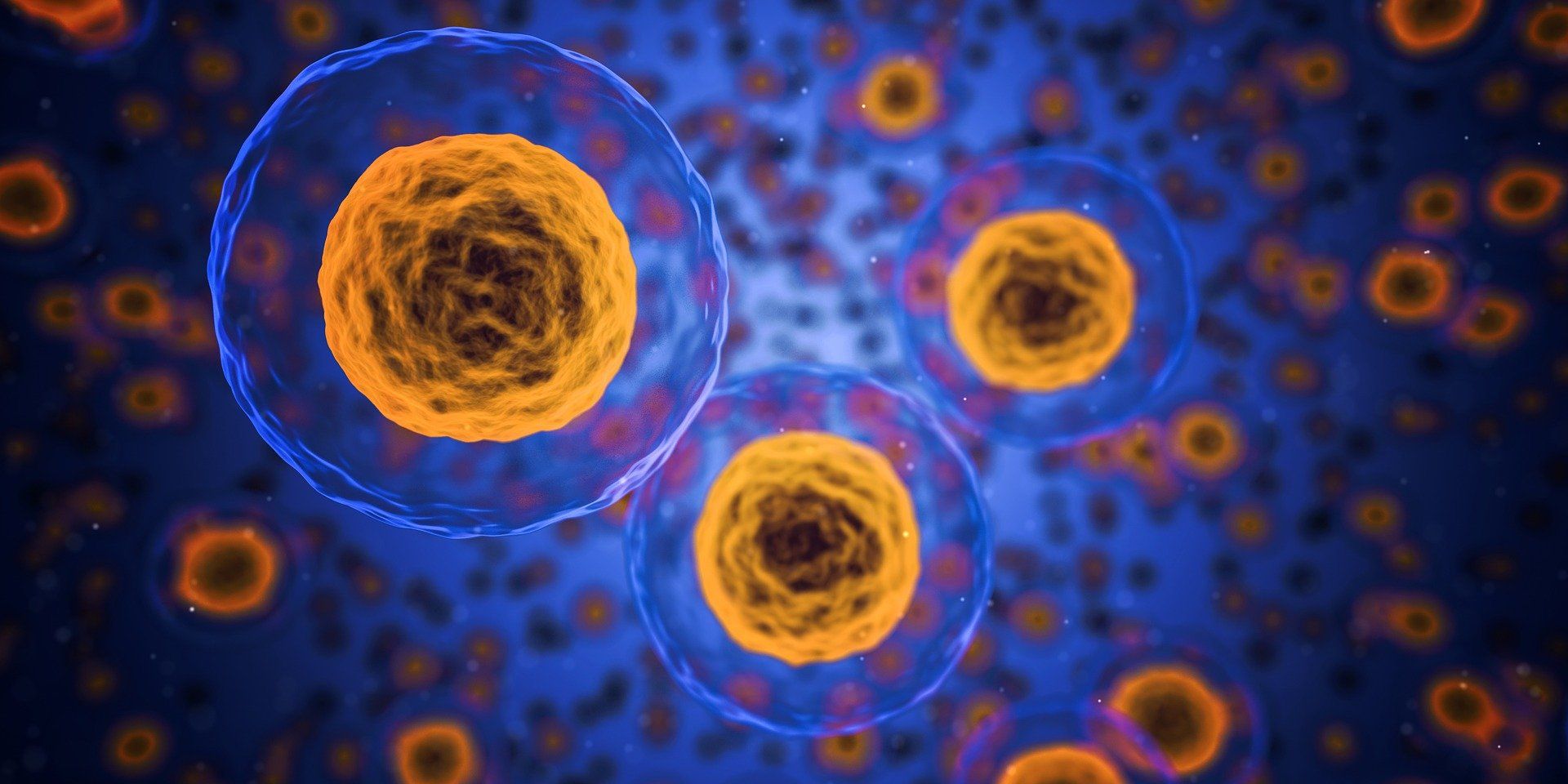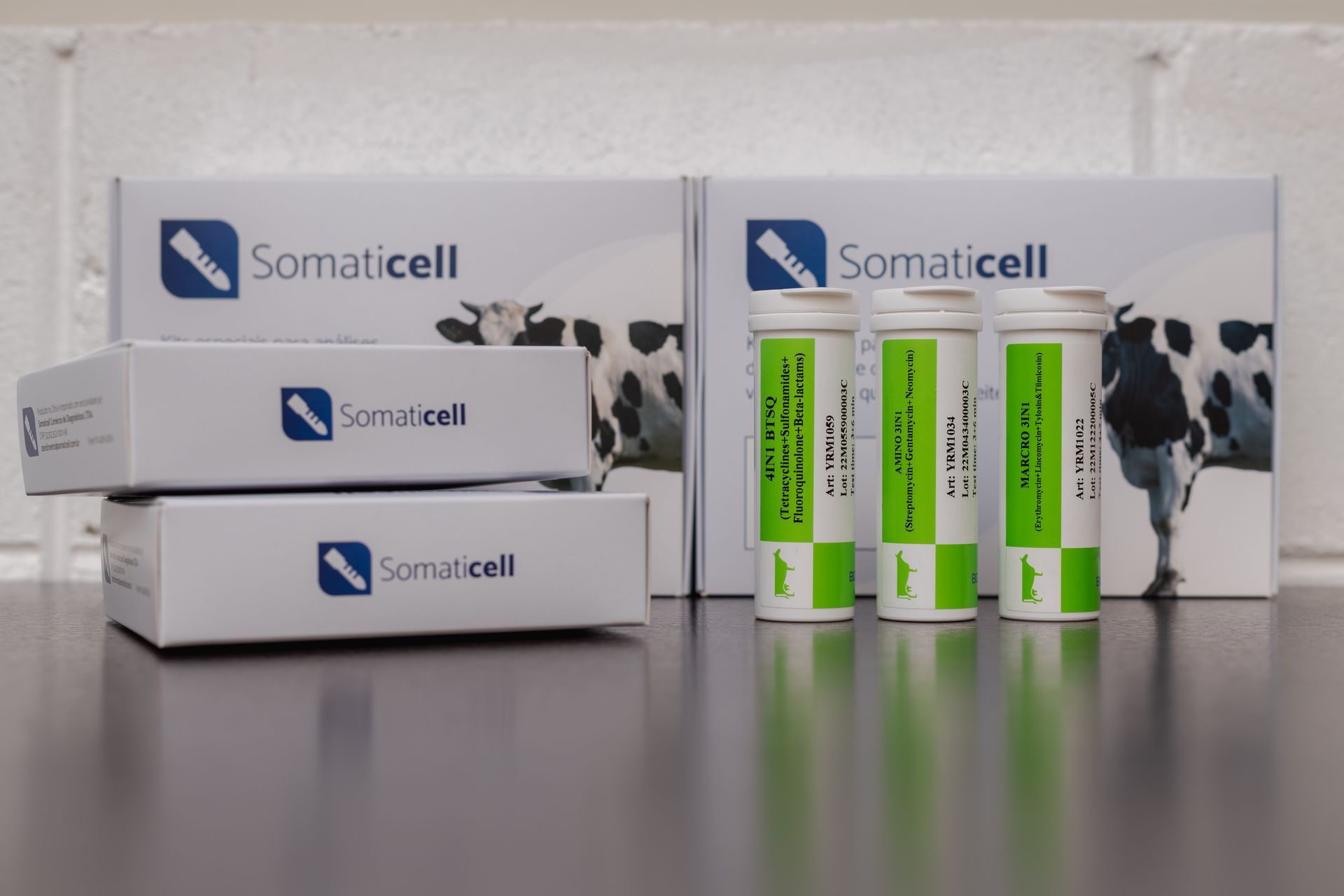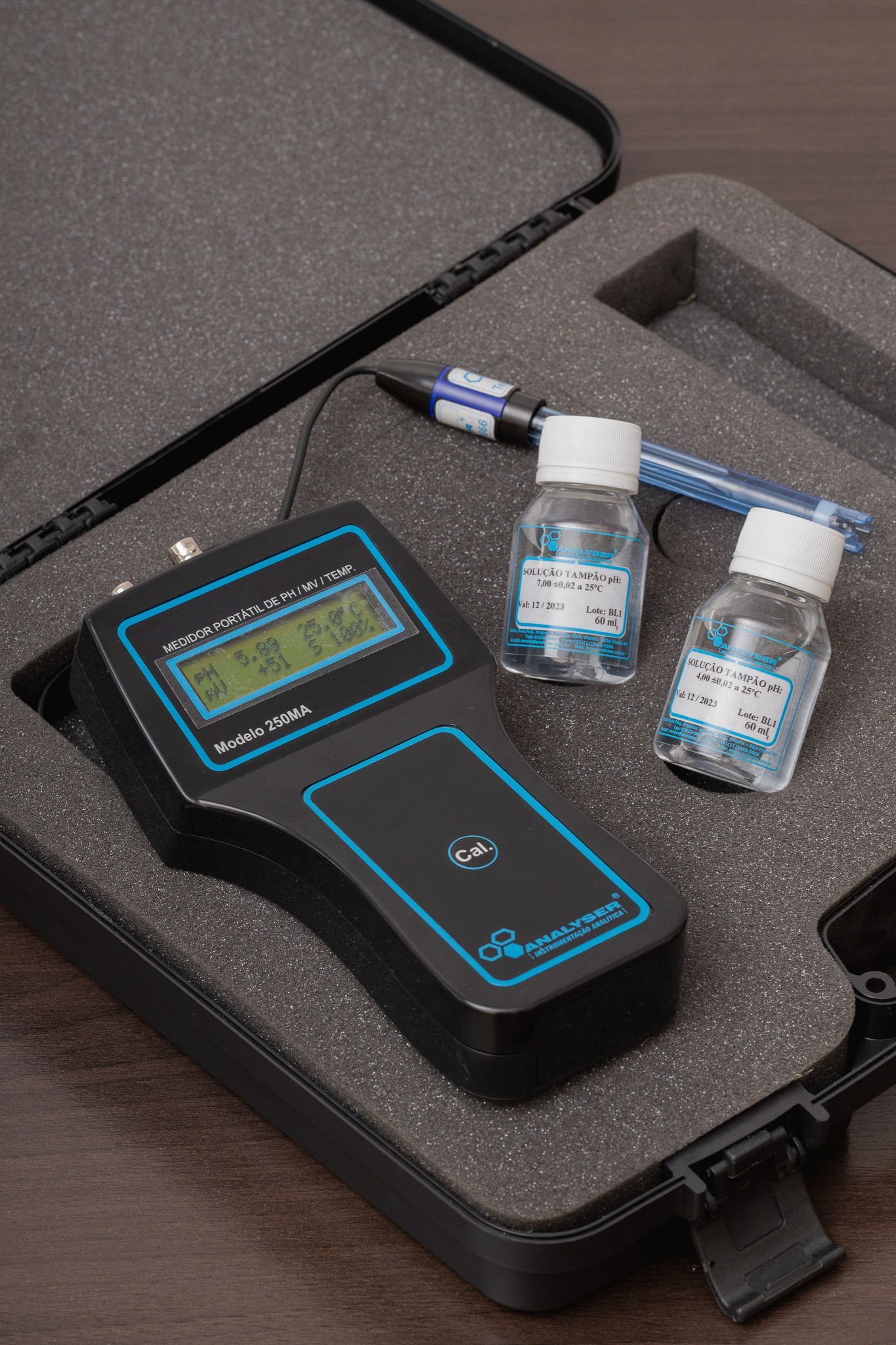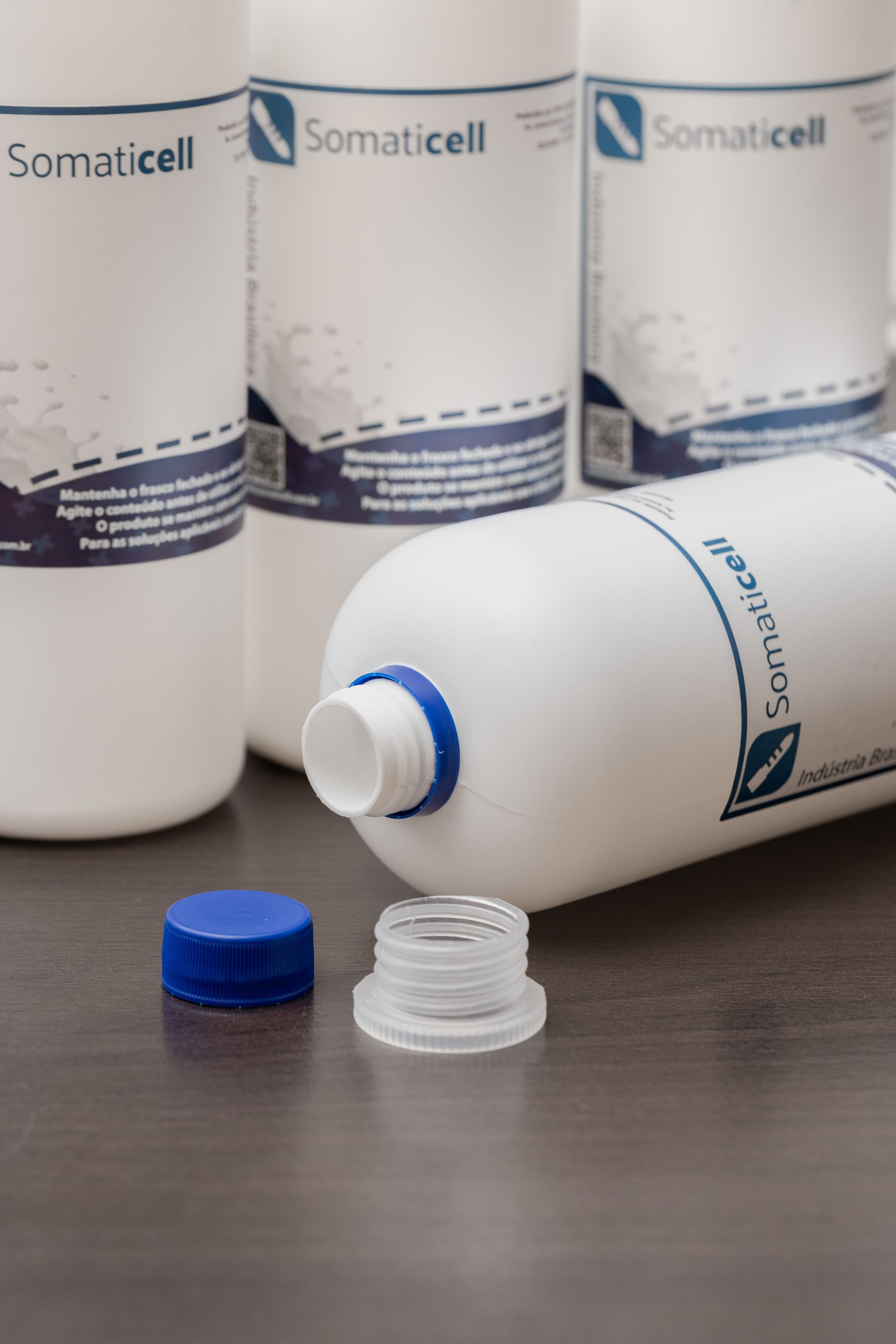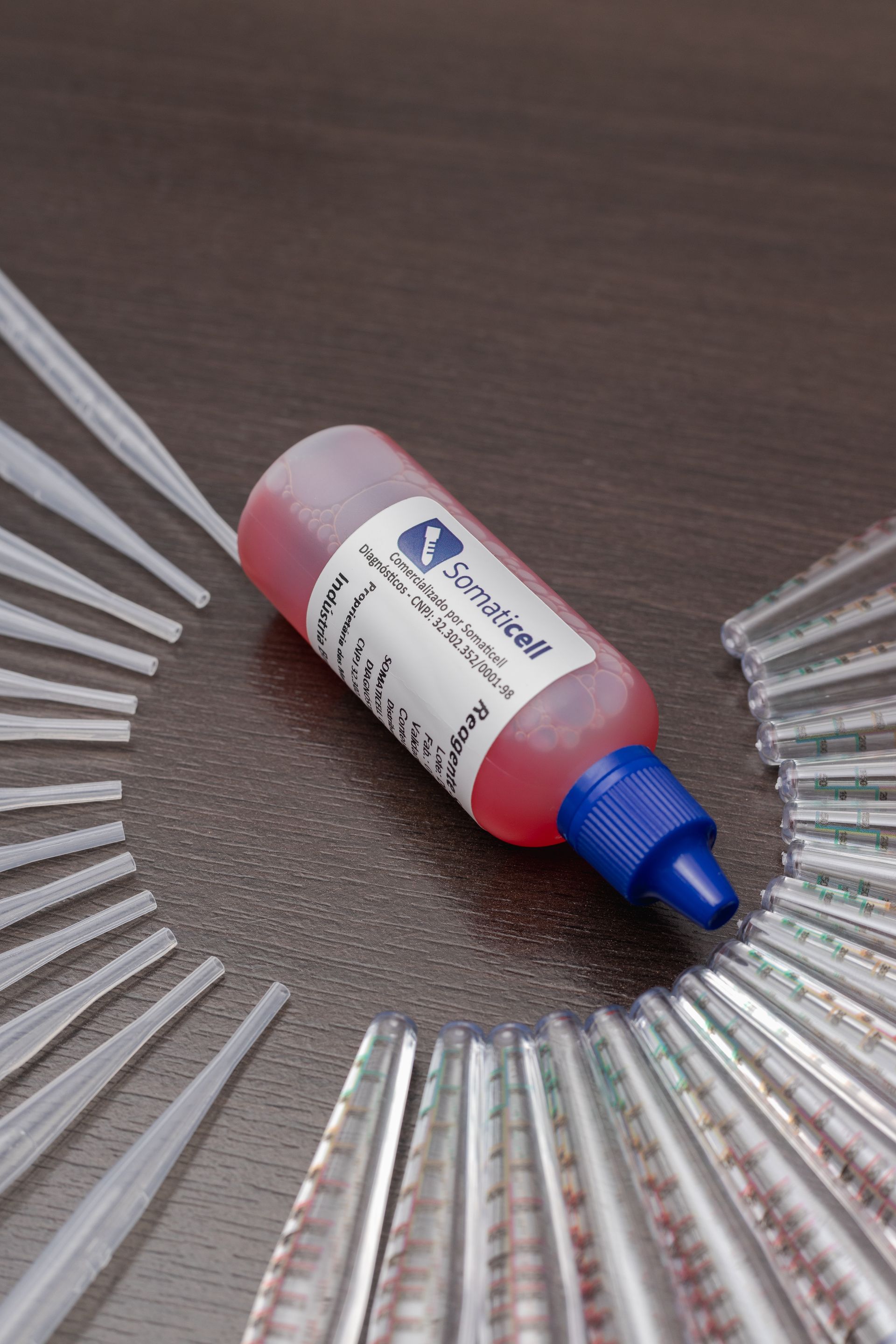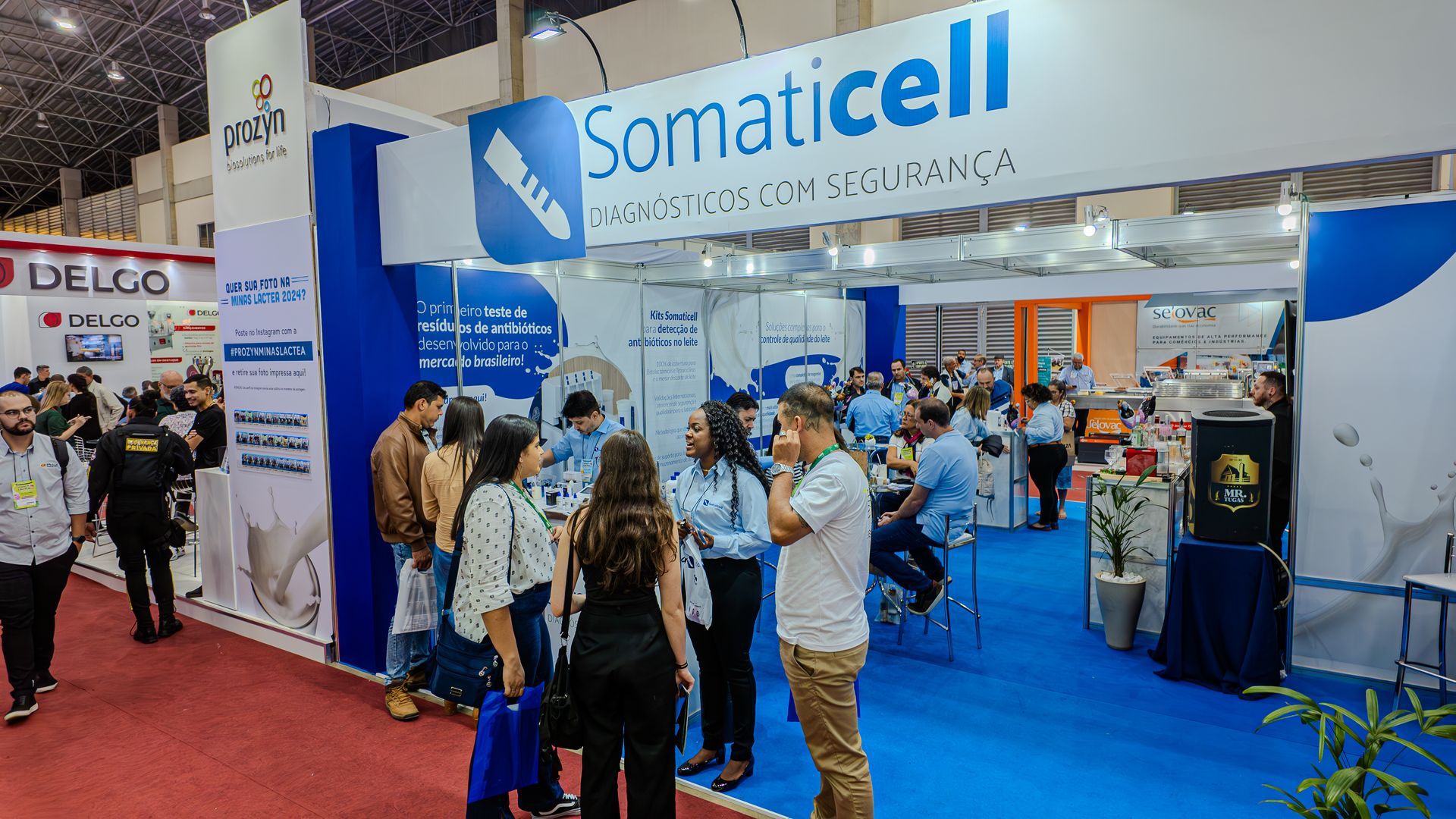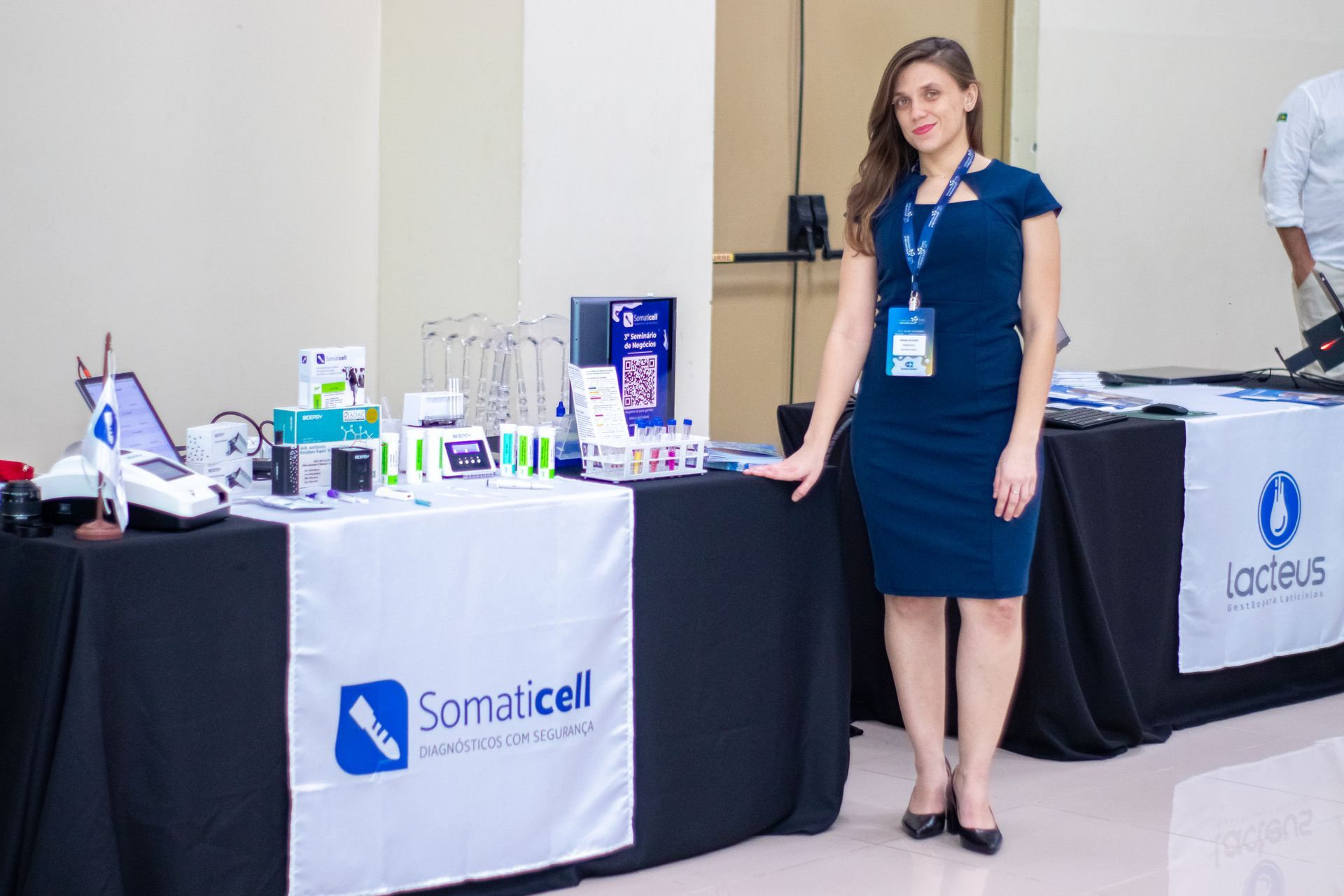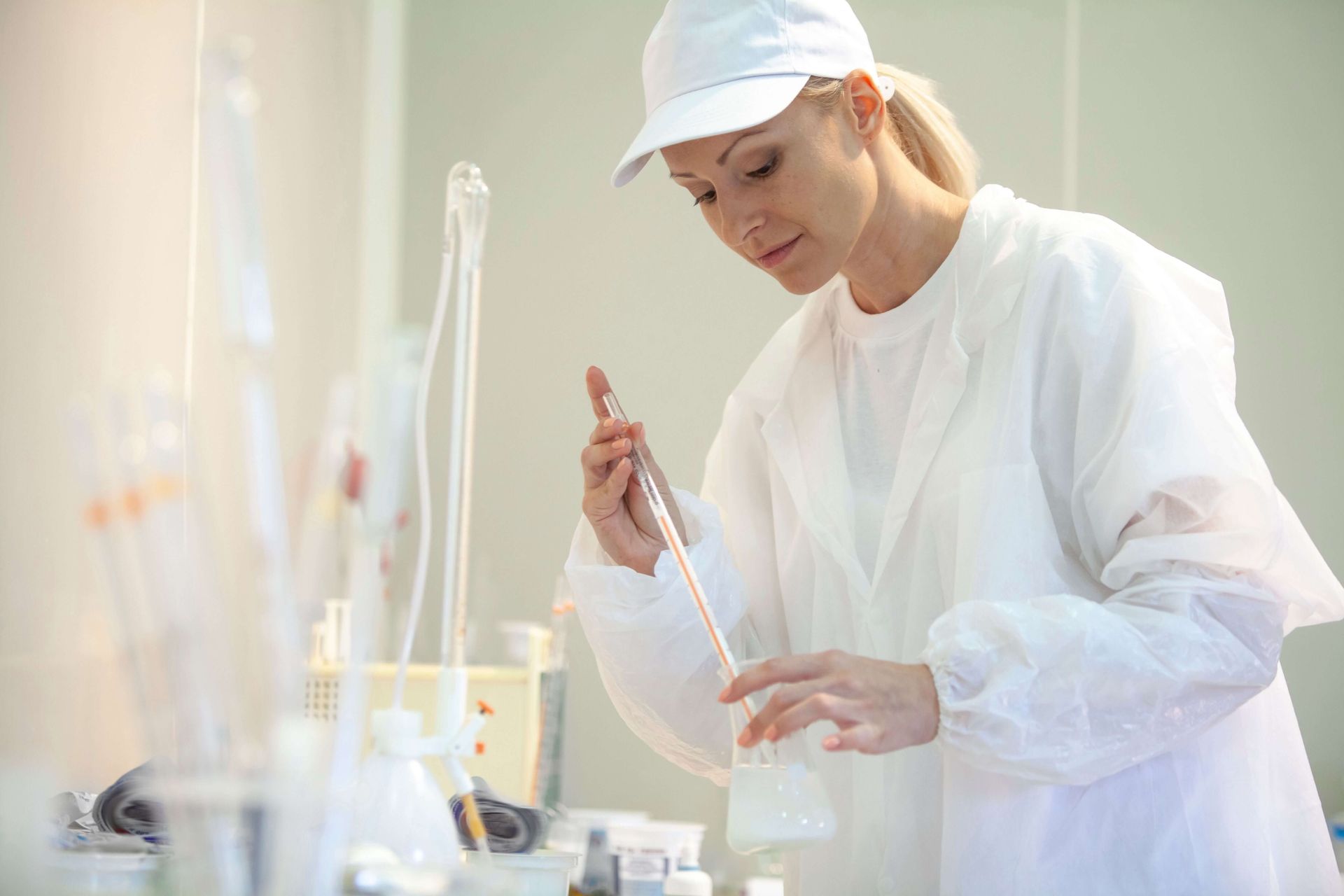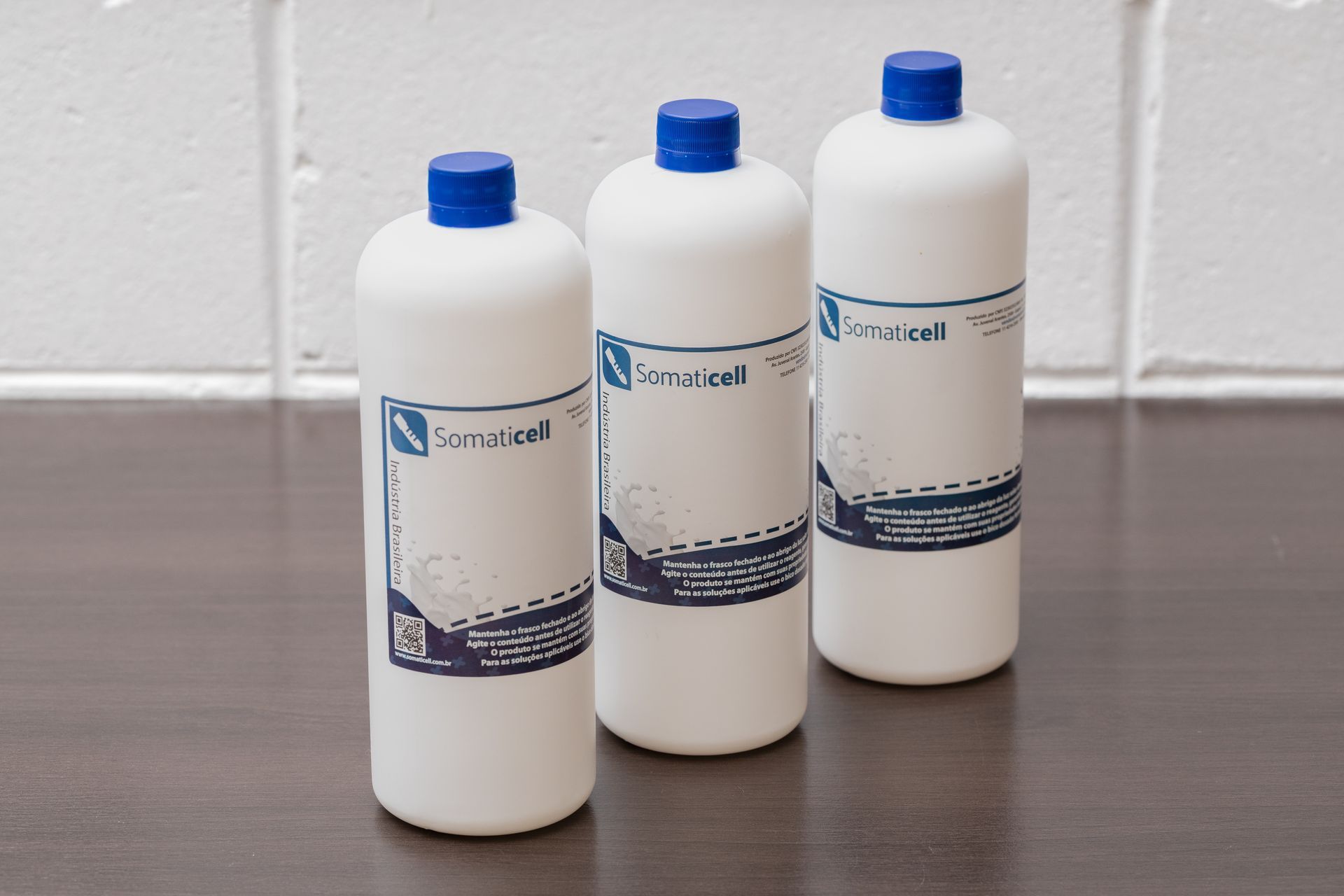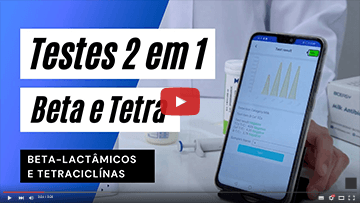Somatic Cells
Sem tempo para ler? Ouça a narração deste artigo em português:
Do you know which somatic cells are present in milk and the importance of controlling them?
Milk consists mainly of fat, proteins, lactose and somatic cells.
Somatic cells in milk are mainly represented by two classes of cells:
- Desquamation cells of the epithelium of the mammary gland itself;
- Defense cells (leukocytes) that leave the blood for the udder.
Não há dúvidas que a contagem das células somáticas têm impactos diretos na qualidade do leite. Isso porque, de acordo com os estudos realizados pela EMBRAPA, a contagem de células somáticas tem correlação direta com a composição do leite bovino.
To better clarify doubts around the topic, in this article we have selected the following topics for discussion:
- What are somatic cells?
- Somatic cell score (linear score)
- What is the somatic cell count (SCC) used for?
- What is the impact of somatic cells on bovine fertility?
- Somatic cell count in lactation
- Somatic cell count as an indicator of milk quality
- Somatic cell count and diagnosis of bovine mastitis
Keep reading!
What are somatic cells?
Generally speaking, all cells of a multicellular organism are called somatic cells, with the exception of gametes (reproductive cells).
Thus, somatic cells represent all cells in the body that have the complete gene pool, called diploid.
Regarding milk somatic cells, in a healthy cow, two classes are found:
Epithelial cells
They come from the desquamation of the cow's mammary gland. These represent from 0 to 7%, and may correspond to up to 20% of the total number of cells, depending on the stage of lactation and also on the cow's age and number of lactations.
Defense cells (leukocytes)
The main class of somatic cells present in milk are the defense cells, that is, the leukocytes (white blood cells).
The presence of leukocytes in milk is one of the important protection mechanisms of the mammary gland. Furthermore, we can consider it as a surveillance function in the non-infected gland.
Most of the somatic defense cells in bovine milk are:
- Macrophages (65 to 80%);
- Lymphocytes (10 to 25%);
- Neutrophils (0 to 10%).
However, milk from an infected gland has more than 90% neutrophils, which are the essential cells for effective innate immunity and are recruited to sites of infection where they ingest (phagocytose) and kill invading pathogens. of cow defense carry over into the milk?
The passage of blood cells into milk is a consequence of inflammation of the udder (female bovine breast). It usually occurs due to a response to infections caused by bacteria as well as other microorganisms.
This inflammation of the mammary gland is known as mastitis, or mastitis, and moreover, it is usually triggered to destroy or neutralize bacteria and their toxins. Thus, the mammary gland is allowed to perform its normal function of producing milk.
In this way, the leukocytes, which are the defenses, migrate from the blood to the interior of the mammary gland, with the aim of combating the agents that cause mastitis.
How to avoid contamination of milk by antibiotic residues?
Apesar de ser um grande desafio para os produtores, é possível prevenir essas situações com a adoção de boas práticas agropecuárias e cuidado no manejo e tratamento dos rebanhos.
Let's look at some ways to avoid higher levels of antibiotic residues in milk:
- A primeira forma de evitar a presença de resíduos antibióticos no leite é através da criação de programas de controle de mastite bovina. Esse cuidado é essencial, pois a mastite é uma das doenças mais comuns em rebanhos;
- Respeitar totalmente as fases de carência dos antibióticos, seguindo à risca as orientações de cada droga veterinária também é indispensável para evitar resíduos;
- The separation of cows being treated from cows that are healthy at the time of milking is essential to avoid misidentification of animals;
- Follow the treatments in accordance with the guidance of the veterinary drug leaflet and avoid non-recommended treatments;
- Train milkers on the correct handling of medications in dairy cows;
- Analyze the milk to ensure compliance of the milk with Brazilian legislation
In all these situations it is possible to find antibiotic residues in milk, which can affect the safety and quality of dairy products.
Somatic cell score (linear score)
To perform the categorization of milk somatic cell count, producers use the linear score. This standard has been adopted since 1982 by the National Cooperative Dairy Genetic Improvement Program (DHI), in the United States.
These parameters are of paramount importance to understand the relationship of somatic cells as well as the result of the production of cows and herds.
Categorization by CCS of the herd's total milk shows that alterations of a small number of cows do not strongly interfere with the mean score of the herd.
A noted observation is that the production loss of each cow in a herd with a linear score 3 was approximately the same as the loss of an individual cow with a score 4.
To obtain the score, mathematical calculations are performed (logarithmic transformation). Thus, CCS values (typically several thousand) are transformed into 10 categories from 0 to 9.
See the table below for the classification of scores in relation to somatic cell count:
| COWS | FLOCK | ||
|---|---|---|---|
| LINEAR SCORE | CCS | AVERAGE LINEAR SCORE | CCS |
| 1 | 25.000 | 1 | 69.000 |
| 2 | 50.000 | 2 | 120.000 |
| 3 | 100.000 | 3 | 209.000 |
| 4 | 200.000 | 4 | 363.000 |
| 5 | 400.000 | 5 | 631.000 |
| 6 | 800.000 | 6 | 1.096.000 |
| 7 | 1.600.000 | 7 | 1.905.000 |
Normal number of somatic cells
Milk from healthy cows with no record of mammary gland infections contains a small number of somatic cells.
In this scenario, the number is less than 50.000 per mL. Also, some authors consider that the milk of a healthy cow can contain up to 250.000 somatic cells per mL, taking into account the characteristics of the herd, breed and number of lactations.
This tolerance is based on the fact that there is a 80% probability of infection in the mammary gland when the SCC is approximately 280.000/mL.
The mastitis factor is what appears as a direct consequence of the increase in the number of somatic cells. However, it is important to point out that other factors may be involved in changing CCS.
Thus, intramammary infection, age of the cow, stage of lactation, season of the year, thermal stress, level of production, among other factors, fall into this event.
There is no doubt that the increase in SCC causes changes in the individual components of milk and thus has an effect on the production and quality of this product and its derivatives.
Also, changes are caused in the main constituents of milk (fat, protein as well as lactose, sodium and potassium balance and chloride concentration, in addition to changing the pH.
What is somatic cell counting used for?
A contagem de células somáticas é uma importante ferramenta na avaliação de diversos aspectos do rebanho, mas também do negócio. Entre eles, podemos citar o monitoramento na qualidade do leite, fertilidade, bem como o indicativo da estimativa de perdas quantitativas e qualitativas da produção.
The somatic cell count (SCC) does not always indicate that a cow is suffering from an infection. This conclusion is due to the fact that the types of leukocytes in milk vary with a number of factors. Thus, the lactation stage, time of year, diurnal variation, milking frequency and intervals, number of lactations and the animal's stress level are included in the analysis.
Increased CCS indicates an immune response most commonly linked to infection, however it is also part of this immune response and confers some protection to the animal.
SCC is expressed as the amount of somatic cells per ml of milk and can be used as an indirect measure or health indicator of breast health. That's because most somatic cells are made up of immune cells that are produced in greater numbers by an infected gland.
In this context, the monitoring of CCS is extremely important, since the increase contributes negatively to the increase in costs, among them, those arising from drug treatments, milk disposal, changes in milk composition and loss of bonus payments from milk to dairy products. It is worth noting that the greatest cost of this process is precisely the cost of discarding the milk.
Furthermore, in cases where SCC remains chronically high (> 200 thousand cells/mL), the tendency is for the cow to be discarded from the herd, due to the difficulty in curing infections and the very high chance of reinfections and contagion of healthy cows in the herd. Thus, this is another negative impact of the increase in SCC and which should be used as an indicator of milk quality management and cost reduction and control.
What is the impact of somatic cells on bovine fertility?
It is true that the increase in the calving interval directly affects the production of cows in a negative way. Therefore, producers seek to maintain a faster pace to impregnate the cows as quickly as possible after the voluntary waiting period, reducing the so-called "open period".
What do runaway somatic cells have to do with bovine fertility?
Well, several factors that delay the new pregnancy of cows during lactation, stand out inaccuracy in the detection of heat, conception failures and pregnancy losses. In the last two cases, the occurrence of mastitis tends to be a major influencer.
Therefore, it is extremely important to take into account the health of the mammary gland also with regard to reproductive management. This is because herds with a high incidence of mastitis tend to have lower fertility and therefore higher costs and lower profitability in milk production.
Studies carried out by the GERAR Leite group (Group Specialized in Reproduction Applied to the Herd) in 2020 show that cows with high CCS have lower fertility at TAI and TETF, in addition to greater pregnancy loss.
Furthermore, cows with somatic cell counts lower than or equal to 200.000 cells per mL of milk had a pregnancy rate at first TAI 14% higher than that of cows with SCC between 200.000 and 400.000 and 22,6% higher than the rate of cows with CCS above 400.000.
Control of cell count in lactation
It is possible to take measures to prevent and combat infections during the cow's dry period. This is done to contain the increase in somatic cell count during lactation, as well as to provide preventive therapy for mastitis.
Assim, o produtor pode utilizar antibióticos intramamários de amplo espectro, que se destacam por sua eficácia contra agentes contagiosos, ou, contra agentes ambientais, fazendo uma proteção mais completa. Além disso, outro grande aliado no período seco é um selante químico que, de forma mecânica, bloqueia o acesso de micro-organismos à glândula mamária, ajudando no bloqueio de infecções e também sendo auxiliar na ação das terapias de vaca seca.
The veterinarian is the competent and legally qualified professional to make this type of prescription and help the producer in this step.
Somatic cell count (SCC) as an indicator of milk quality
With the constant demands that are imposed on dairy producers, they have been looking for ways to measure the quality of milk, reduce their costs and increase the profitability of milk production.
In this way, these producers seek to carry out actions that guarantee the framework of dairy products in the legislation to remain competitive in the market.
Thus, it would be impossible to improve the quality of care for their cows if they did not have an effective measure to determine positive and negative changes to improve milk quality.
Therefore, counting the number of somatic cells has become the standard method of measuring milk quality. Therefore, CCS is one of the main indicators of milk quality in all places in the world where there is a developed dairy activity.
Producers use values between 50.000 and 100.000 per ml as a reference to indicate a regular amount of somatic cells in a cow. Thus, when this value is above what is considered normal (more than 250.000) it may mean that the animal is contaminated.
As we saw earlier, somatic cell values above this value (more than 250.000) can change the composition of the milk, directly affecting its quality.
Somatic cell count (SCC) and diagnosis of bovine mastitis
Bovine mastitis is a very common inflammatory and infectious process that occurs in the animal's mammary gland. It brings great damage to the quality of the milk and a significant reduction in the animal's production capacity.
Cows that contract the infection become debilitated and, if not promptly treated, may even die. But the most serious case is subclinical mastitis, as in addition to not being detectable without the proper indicators, it helps to spread the disease through the herd.
Mastitis, or mastitis, as we also know it, is caused by microorganisms and their toxins, irritating chemical agents and physical trauma.
However, the most common cause that affects a significant part of the cattle herd are pathogenic microorganisms. They reach the animal through the breast canal.
Thus, the inflammation that occurs in the mammary gland is a reaction of the body trying to fight infectious microorganisms to try to resume the normal functions of the animal.
However, this process can cause other damage to the animal. Just to illustrate: the destruction of epithelial cells that are responsible for the synthesis of fundamental elements for milk quality, such as lactose and casein, even causing the milk to be discarded, which will be compromised in its composition and quality, due to the infection.
The presence of somatic cells in milk is normal, since they are part of the composition, as well as proteins, fats and lactose. However, high levels of somatic cells can be indicative of infection in a cow or the entire herd. In this sense, it is of paramount importance that the CSS be performed on the herd periodically.
For this task we are able to help you!
With our strategic control solutions from CCS, your milk supply chain will never be the same.
Para saber mais informações sobre nossos serviços, entre em
Contact com a gente e assim, fale com um de nossos especialistas!
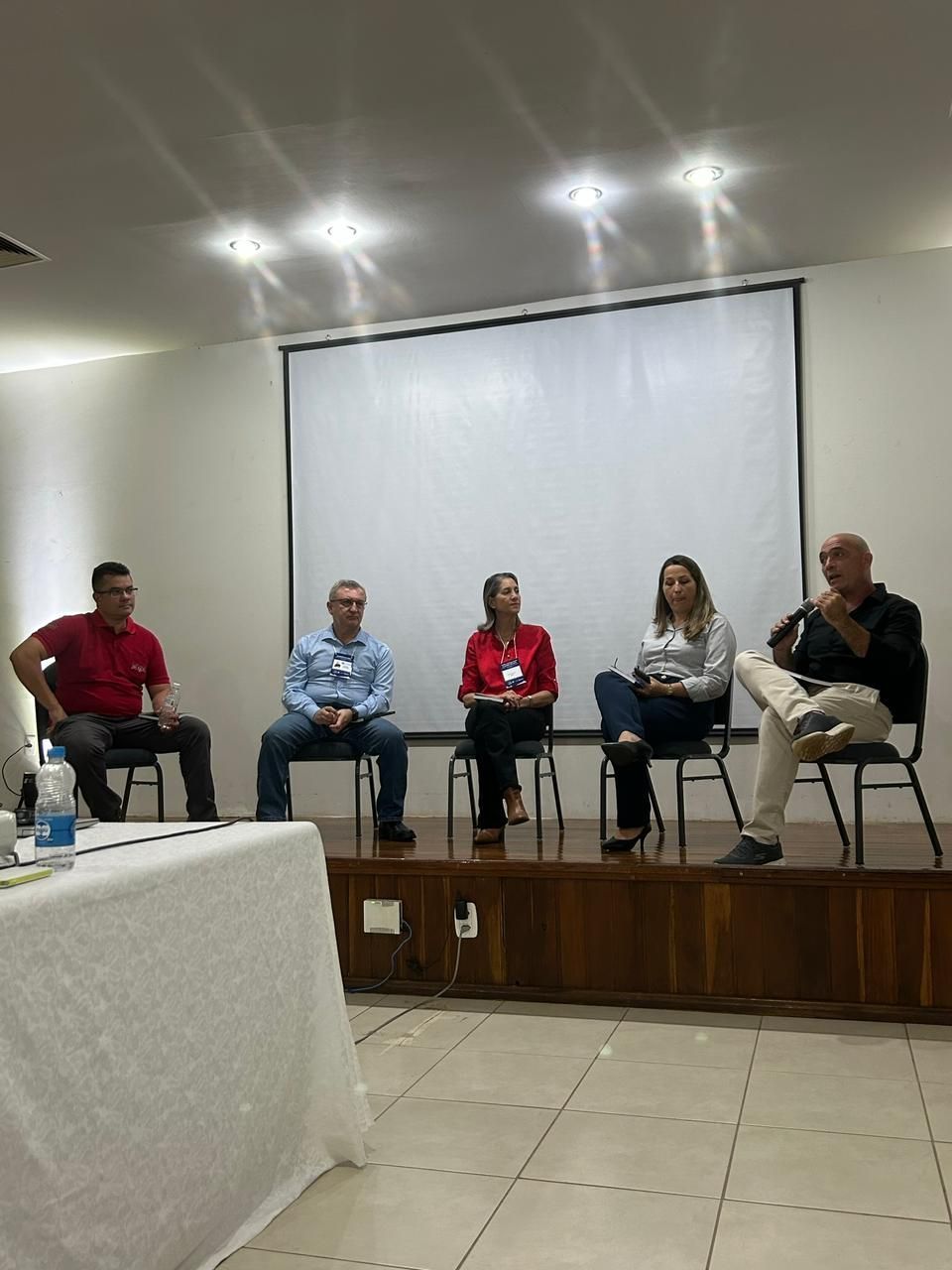
Conheça nosso App

Our Educational Videos
Somaticell on Social Networks


